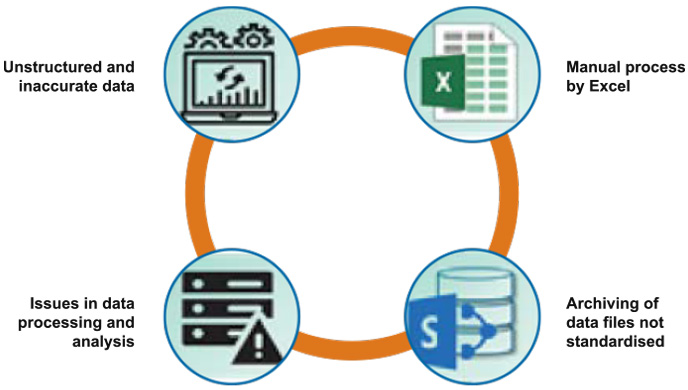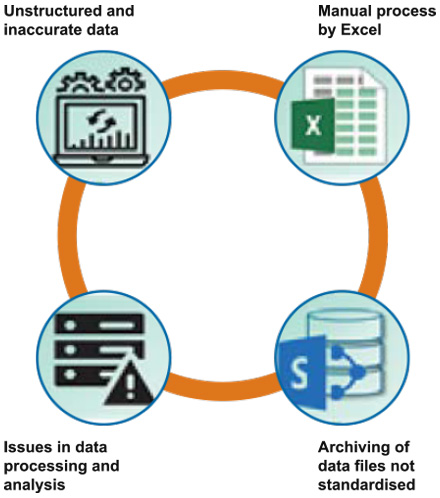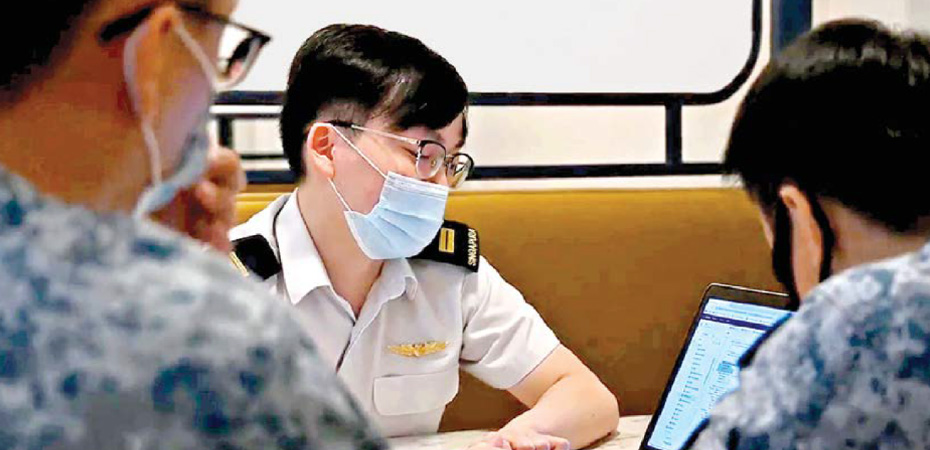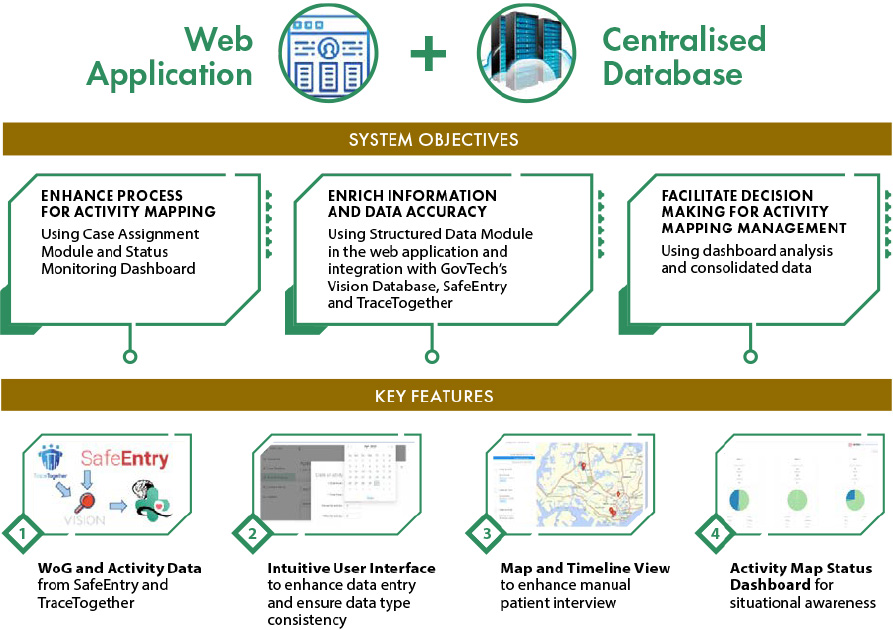It became more and more challenging to do contact tracing promptly, especially after cases surged in April 2020. Data poured in from multiple sources in different formats. The Ministry of Manpower (MOM) and MOH collected data diligently, but the numerous sources only caused confusion. Worse, the data not only did not include activity mapping and close contacts, but was also sometimes inaccurate. It reached a point where the contact tracers were spending more time locating activity maps than doing actual contact tracing.
There was no common platform to work on and it became very urgent to fix the need to make better and quicker sense of the data. There was a critical need to standardise how activity maps should be created, stored and accessed. The massive contact tracing operations would not be sustainable if they continued to rely only on Microsoft Excel. HSTF quickly looked to DSTA for a technology solution.

|
INITIAL CHALLENGES IN CONTACT TRACING PROCESSES |


MAJ Lee Yiu Wing, Battalion 2IC 6th Signal Battalion, who was responsible for digital solutions and regarded as the chief technology officer of HSTF, had the idea of creating a web-based application to enhance end-to-end contact tracing processes. He knew that the lack of software development talents in his project team was the biggest challenge. They had the funds to employ contractors to develop contact tracing software, but the process would take too long. So MAJ Lee looked for resources within the SAF and DSTA. With support from Comd HSTF and the Army's Chief Signals Officer, DSTA and SAF in-house programmers from HQ Signals and Command Systems and the Republic of Singapore Air Force (RSAF) Innovation SWiFT Office soon came on board for the digitisation journey. Another challenge for MAJ Lee's team was to resolve the differences with the IT systems developed by other ministries. The project team often found that it required extra effort to integrate its product into MOH's system. And there was resistance even from within HSTF.

LTA Kong Yu Jian and his team from RSAF Innovation SWiFT Office discussing how to integrate data sources on a single platform.
Source: MINDEF
The first prototypes of the SwiftCobra application required iterative improvements which incorporated user feedback. HSTF doubled down on its innovation efforts to come up with an ops-tech solution for more efficient data collection and integration. This was resource intensive and time consuming, and some outcomes had to be aborted. After two weeks, the first version of the web-based application was rolled out on MOH's intranet. MAJ Lee and his team engaged the Activity Mapping Centres constantly to refine the processes for contact tracing. But it took some time to get the new processes implemented by the relevant government entities. When SwiftCobra was eventually adopted by all of them, most of the problems of integrating the data from the various sources were resolved.
There was resistance to using the new system from the Centre Head and activity mappers. We managed to launch the system only because the order came down from the HSTF HQ. But getting buy-in from the ops users and sustaining the trust of the HSTF HQ were battles for the team. . . . The team's pinnacle moment was when our system was successfully integrated with the other ministries' systems… We had started with building an internal system to serve the SAF but were soon requested by MOH to extend it to all the public hospitals.
MAJ Lee Yiu Wing
Battalion 2IC, 6th Signal Battalion
HSTF traced 53,906 COVID-19 cases and raised Quarantine Orders for 163,806 individuals.
The SwiftCobra system had gone beyond digitising activity maps. It featured links that were also developed across the WoG IT infrastructure so that contact tracing could be done seamlessly with synchronised data sources. When SwiftCobra and the national applications of SafeEntry and TraceTogether were integrated, the time taken by the contact tracing teams to identify and quarantine a close contact was more than halved, from four days to less than two days. HSTF can look back on SwiftCobra as one of many successful solutions that were born from the ops-tech partnership that yielded better operational outcomes with reduced manpower, and played an important role in enabling HSTF to accomplish its mission. SwiftCobra continues to be used for contact tracing.

|
SYSTEM DESIGN FOR SWIFTCOBRA |
